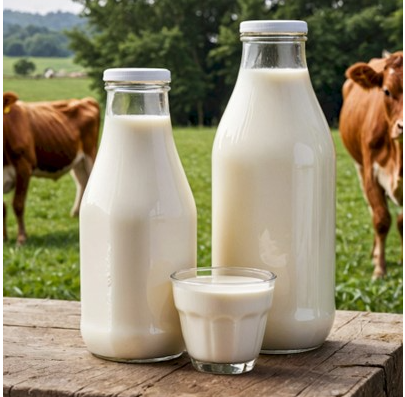
Kenya's Dairy Sector
Kenya’s dairy industry is one of the leading sectors in Africa and the top producer in East Africa. The sector is on a steady growth trajectory, with an estimated annual growth rate of 3% to 4%. The dairy value chain plays a critical socioeconomic role, contributing 4.5% to the national GDP, 14% to the agricultural GDP, and 44% to the livestock sub-sector GDP.
The dairy value chain is a significant socioeconomic enterprise, contributing 4.5% to the national GDP, 14% to the agricultural GDP, and 44% to the livestock sub-sector's GDP. It supports the livelihoods of approximately 1.8 million smallholder households and directly employs an estimated 750,000 people, with an additional 500,000 employed indirectly. Currently, total milk production in the sector is estimated at 4.6 billion liters per year.
The Kenya Dairy Board, tasked with regulating, developing, and promoting the industry, oversees the sector. The commercialization of dairy farming has greatly contributed to the sector's growth, creating employment opportunities across the value chain. In 2023, processed milk production reached 811 million liters, valued at Ksh. 40.45 billion, a growth attributed to industry development and favorable weather. Kenya also boasts the highest per capita milk consumption in Sub-Saharan Africa, at approximately 110 liters per person, which drives domestic demand. Additionally, value addition in milk products has spurred export demand for ghee, ice cream, UHT milk, whey, butter, and cheese.
The value of exported value-added products in 2023 was Ksh. 7.3 billion. As illustrated below:
Dairy Industry Performance
Milk Production
|
Year |
Volume Million Liters |
Per Capita consumption |
|
2019 |
3,983.3 |
99.0 |
|
2020 |
4,048.1 |
86.0 |
|
2021 |
4,640.9 |
90.7 |
|
2022 |
4,604.3 |
78.3 |
|
2023 |
4,568.6 |
86.1 |
Source: Kenya Dairy Board
Progress in achievement of dairy BETA goals
|
|
Goal |
2021 |
2022 |
2023 |
|
1 |
Increase in Volume of formally marketed milk in litres |
801.9 million |
755.3 million |
811million |
|
2 |
Increase in Value of formally marketed milk in Ksh. |
33.7 billion |
35.7 billion |
40.45 billion |
|
3 |
Establishment of Cooperatives at ward level |
670 |
689 |
770 |
|
4 |
Increase value addition (Butter, whey, ghee & cheese) in Tonnes |
1201.6 |
835.2 |
1072.1 |
|
5 |
Increase in the export of dairy Produce in Ksh. |
568.9 million |
4.9 billion |
7.3 billion |
Source: Kenya Dairy Board
The Kenyan dairy sector contributes 4.5%, 14%, and 44% to the national, agricultural, and livestock GDPs, respectively. Additionally, it directly employs 500,000 people and indirectly provides jobs to 750,000 through services such as artificial insemination, breeding, technology, and consulting. The sector supports an estimated 1.8 million smallholder households. Thanks to interventions from the government, the Kenya Dairy Board, development partners, and other industry stakeholders, the dairy sector has grown by an estimated 5% annually—one of the highest growth rates in the country. This translates to an annual production of 5.2 billion liters of milk. As a result, the dairy industry plays a vital role in Kenya’s socio-economic development, contributing to wealth creation and poverty alleviation for many Kenyans.
In 2021, the Kenya Dairy Board launched the National Dairy Regulatory Laboratory in Kabete, a state-of-the-art facility aimed at enhancing surveillance of milk and milk products to ensure their safety and quality along the dairy value chain. The Board has also introduced an online licensing system for dairy business operators, accessible via phone or computer. Capacity-building initiatives for farmers are underway, promoting the use of modern technologies such as milking machines and renewable energy sources like biogas and solar. These efforts aim to minimize waste, promote sustainability, and protect the environment.
The Kenya Dairy Board, in partnership with USAID's Kenya Investment Mechanism, developed a 10-year Dairy Industry Sustainability Roadmap (KDSR). This framework represents a collective effort by industry stakeholders to catalyze and accelerate the transition to a more sustainable, competitive, and low-carbon dairy industry, enhancing the economic viability of both milk producers and processors. The Road map is based on four pillars, 12 goals and 26 targets as illustrated below:
